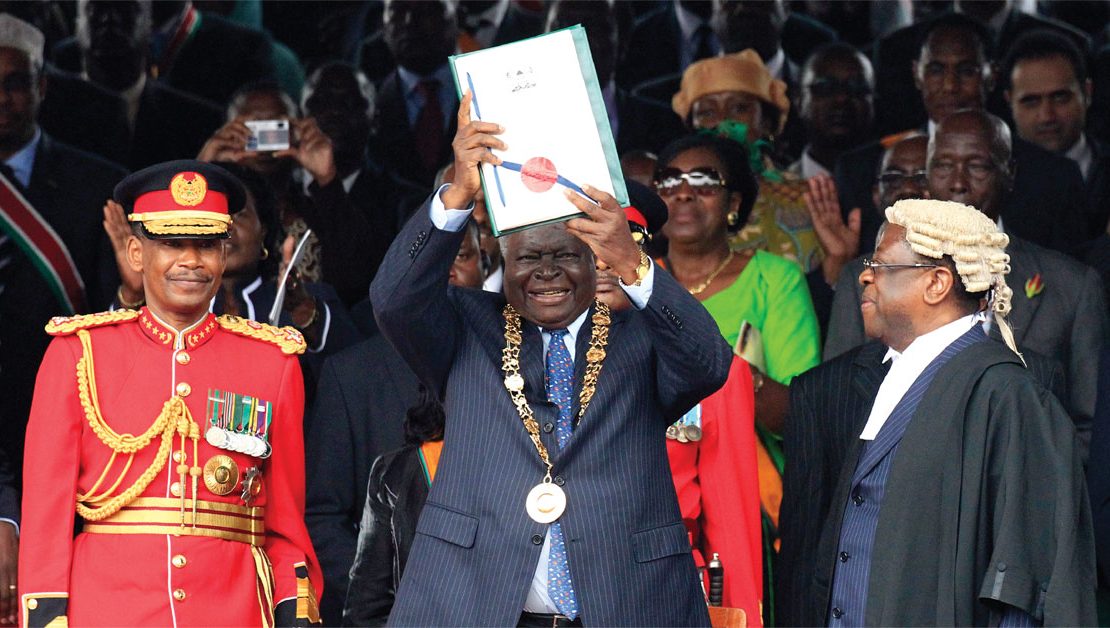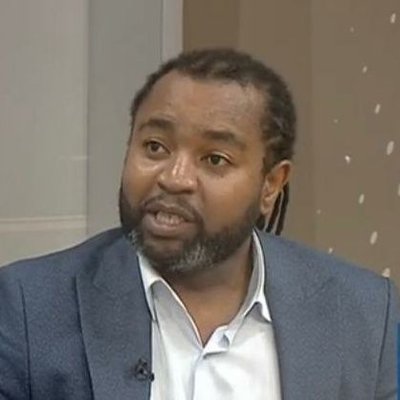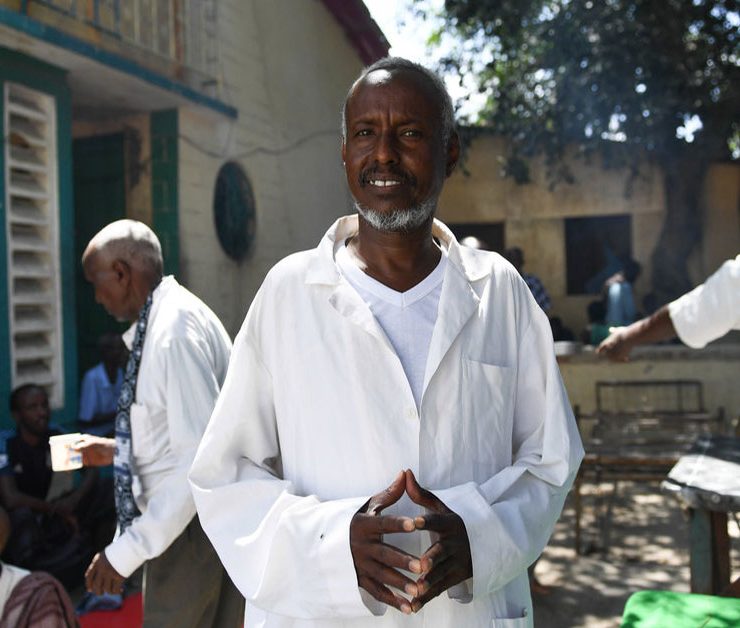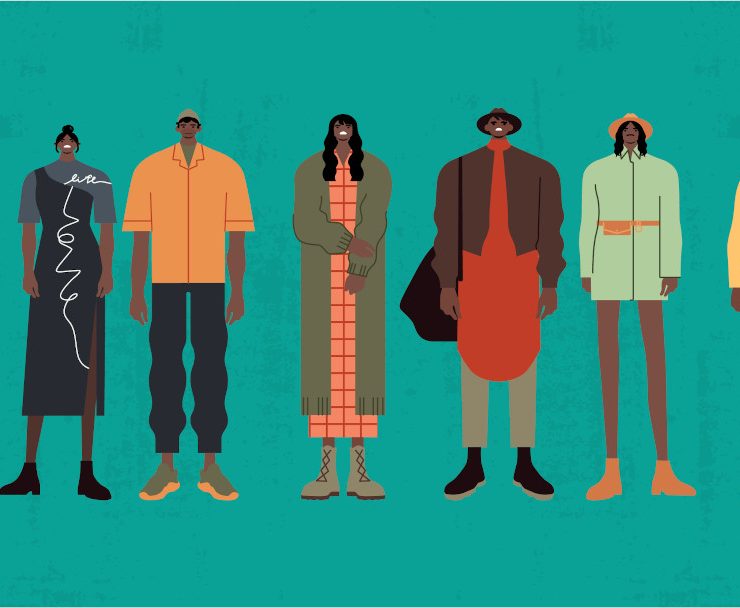(As per the Consolidated Judgement of Petition No. 282 of 2020)
Ever since 13 of May 2021, when the Constitutional and Human Rights Division of Kenya’s High Court delivered the consolidated judgment to Petition No. E282 of 2020, the Basic Structure Doctrine (BSD) has become a shibboleth of sorts.
In the ongoing subsequent discourse about the judgement, the debate distinguishes those who have or purport to have a mastered understanding of constitutional law from those with a pedestrian one. I somewhat belong in the middle.
Justice Lenaola Said It First
Whereas I had come across the doctrine during my stint as a member of the Committee of Experts for Constitutional Review (CoE), and thereafter in my interaction with legal and political literature, I had never taken a keen interest in the doctrine.
However, my curiosity was enhanced in 2013, when Supreme Court Justice Isaac Lenaola unleashed the doctrine to block Kenya’s National Assembly from nefariously amending the Constitution of Kenya, 2010 (CoK, 2010) by deleting the terms Member of Parliament (MP), Member of County Assembly (MCA), and Judge from the list of state offices outlined in Article 260 of the Constitution. This with the aim of freeing MPs, MCAs and judges from the clutches of the then nascent constitutionally created Salaries and Remuneration Commission (SRC) that was given exclusive mandate to determine the salaries and remuneration of state and public officers. Similarly, the 2018 Ugandan case of Male Mabirizi Kiwanuka & Others Vs. Attorney General, invited my mind to a cursory consideration of the doctrine.
In the 2013 advisory sought by the now defunct Commission for the Implementation of the Constitution (CIC), which prayed for guidance on the constitutionality of the constitutional amendment bill gazetted by the National Assembly, when rejecting the impudence by MPs, Justice Lenaola appreciated the history and motivation behind the creation of the SRC writ large Kenya’s MPs’ insatiable appetite for whimsically self-apportioned salary increments.
The court appreciated that in as much as the plain reading of the Constitution’s text somewhat permitted the proposed amendment, whether initiated through Parliament or the people, the ease with which this could have been occasioned, three years after promulgation, raised antennae and invited deeper rumination. This could not have been the authorial intent of Kenyans, who for many years had protested, to no avail, about the huge and rising self-determined MPs’ pay. Kenyans could not have finally a checking mechanism, through the CoK 2010, for the same to be effortlessly binned. This could never have been the motive and inasmuch as this was not explicitly indicated, Kenyans must have intended for this solution to last. If not expressly stated, how could this be deciphered?
***
Enter the doctrine of basic structure.
Understanding The Basic Structure Doctrine
The basic structure doctrine (BSD) is a common law (judge-made, precedent, case law) theory that asserts essentialism in constitutions. Akin to the building architectural philosophy of “form follows function”, the doctrine holds that the constitution of a state bears certain features, that emanate from its foundational purposes. These cannot be removed.
These attributes are intended to endure because they are like the DNA of the constitution. Like that of an organism, the genetic structure and materials cannot be changed without mutating it permanently. They echo and reflect the primary reasons and antecedents that motivated the imagination of the particular constitution. The basic structure responds to the why, where, what, and how premonitions of a constitution. It is the constitution’s recipe whose ingredients cannot be changed without destroying its flavour. The doctrine therefore guides that this basic structure cannot be casually manipulated by politicians and others. That is why, when stopping the MPs’ constitutional misadventure Justice Lenaola stated that “The basic structure of the Constitution, which is commonly known as the architecture and design of the Constitution ensures that the Constitution possesses an internal consistency deriving from certain unalterable constitutional values and principles.”
It is with this beacon that Dr. David Ndii, Jerotich Seii and other petitioners approached the High Court, asking it to peremptorily stop the promoters of the Building Bridges Initiative (BBI) and others, from amending the basic features of the CoK, 2010. Amongst other things, the petitioners wanted the court to affirm that the constitution bore a basic structure, therefore invoking the doctrine. If it did, how did it affect the constitutional amendment avenues provided in articles 255-257 of the CoK, 2010? Were there certain aspects that were permanent in nature hence unamendable? If so, what were they?
Context Is Everything
Just as in India, Uganda, and Germany, the judges agreed with the petitioners that Kenya’s CoK 2010, through its text, history, context and interpretive tools, conjures a Basic Structure that cannot be easily and fundamentally changed through referendum or Parliament. They stated that Kenya’s constitution like diamonds, has attributes that are for ever.
As such, those aspects of the Constitution must endure and can only be changed through demonstrable, accountable, logical, democratic, and collective will of the primary constituent – the citizenry. The basic structure can only be changed when the entire nation moves. The court travelled back in time and observed Kenyans lament about the “hyper-amendments” (as per the amici curiae in the petition) occasioned upon the independence constitution.
The judges commiserated with those who had lost loved ones and property through human rights violations. They sat through the hearings, heard and watched the thousands of Kenyans who presented their views in all the two hundred and ten (210) constituencies to the then Professor Yash Pal Ghai led Constitution of Kenya Review Commission (CKRC). They saw the many who decried corrupt public officials, poor service delivery and historical injustices. In 2003 and 2004, they watched Kenyans debate during the national conference at Bomas, reject through a referendum, the adulterated Wako Draft in 2005, and in 2010 convincingly affirm the CoE Draft.
From this historical journey, the text that expressed the people’s solutions, including how they wanted the same interpreted, the five judges were in no doubt that the long, laborious, tearful and sanguine process that Kenyans put themselves through , so as to bequeath themselves and future generations of this constitutive document, was sufficient evidence that essence and permanence were implicit in the end product. This therefore could not be unravelled without a similar if not more comprehensive journey. After all, the return leg of the proverbial journey of a thousand miles, cannot be completed in a hundred.
People Power
The court therefore asserted that for the basic structure to be morphed, the sovereignty of the people must bear. The judges added that the sovereignty of people has three tiers. There is the primary constituent power that must be invoked “to form (or radically change) a constitution.” Logically, this residual power is the parent and will of the constitution and is therefore unfettered by “previous constitutional rules and procedures.” In Hegelian philosophical thinking, for the basic structure to change, the being (nation) grows into (becomes) another being. In other words, it is so radical, that it is similar to the nation changing into another nation. This ‘becoming’ is demonstrable through four metamorphosis stages, which were described as the “CoE model” by the courts.
Proposed Process of Amendment
Initially, the public must be informed and educated through civic education. This means that information and copies/materials documenting the proposed change(s) must be distributed widely and equitably. People must be educated about the context and intention of the proposed amendments. This arouses debate and shapes opinion. Secondly, their views must be sought and accounted for through public participation. Ultimately the people must affirm or reject the proposed changes through a referendum, after the convocation of a representative constituent assembly (national conference, parliament, county assemblies).
The judges guided that this comprehensive process can be the only confirmation that the people were truly and meaningfully engaged. It is the only way to demonstrate primary constituent power.
The primary constituent power is followed by the secondary constituent power. This power is “an abbreviated primordial Constituent Power exercisable by the whole polity in an abbreviated process to alter the constituting charter (Constitution) in non-fundamental ways, without altering the Basic Structure.”
This is the power categorically provided by the CoK 2010, in articles 255 to 257 which provide avenues for its amendment. Basically, these are issues amendable through referendum “subsequent to public participation and Parliamentary process.”
The Alternative View
At this point, it is important to note that the respondents to the petition, the Attorney General (AG) in particular, acceded to the fact that Kenya’s constitution did indeed bear a basic structure. His point of variance was that, this basic structure is what is “signalled by Article 255”, which lists ten “matters” (not articles!) that must be amended through a referendum regardless of the initiative (people or parliament). These matters include the sovereignty of the people, the supremacy of the Constitution, the functions of Parliament, presidential term limit, and the independence of the judiciary.
The AG argued that Kenyans specifically and expressly insulated these ten matters, because of their foundational and gravitational force on the entire constitution. Not only are the items of great national and public interest, but also entangled with and pivotal to all other provisions of the Constitution. To the AG, this was the basic structure and Kenyans were free to tweak with it as long as they followed the avenues provided in Articles 256 (parliament) and 257 (people).
A Referendum Is Not An Event
Be that as it may, an analysis of the proper and process of amending any of Article 255 matters, marries with the four stages that the court outlined as accessories of the primary constituent power. A referendum is not an event but a process that invokes broad public debates and campaigns; that are informed through public education and information sharing.
The formal representation of the people’s will, the legislature, must also consider the discourse before it is finally presented to the people in a plebiscite. In other words, for Article 255 matters to be said to have been constitutionally amended, would be akin to invoking, in the words of the judges, “the immediate expression of a nation”. The argument being that the AG actually sympathised with the petitioners and judges entirely. Even as textually provided, the reality is that Article 255 matters cannot be amended without moving or shaking the nation. They are a confirmation that the CoK 2010, bears a basic structure, which in deconstruction implies the invocation of the primary constituent power. The explicit requirement for a referendum, the secondary constituent power, is but only the culmination of an implied utilisation of the primary constituent power conveyor belt. In other words, Article 255 matters are not the exclusive basic structure as the AG argued, but form part of it.
Lastly is the Constituted Power. This power is an express product of the Constitution. The judges described it as ordinary, limited, and delegated. “In Kenya, the Constituted Power is exercised by Parliament, which has limited powers to amend the Constitution by following the procedures set in Articles 255-257 of the Constitution. The Constituent Power is formal in structure and functions. It is an agent of the sovereign will. The use of its agency powers is however limited by the express delineation of its powers, functions, and responsibilities as outlined in the Constitution. Its limitations in constitutional amendments is indicated by the inclusion of direct democracy avenues like the popular initiative, its limited role when considering a bill initiated by the people, mandatory public participation, and Article 255 matters. Instructively the express intervention by the courts as earlier cited by Justice Lenaola and in the consolidated judgement to Petition No. 282 of 2020, confirm limitation.
The BSD As A Subjective and/or Objective Doctrine
After establishing that Kenya’s constitution bears a basic structure, the next big questions were – What comprises it? What are its features? Where do we find it? How does it look like? Are they provisions that one can point to and say –“Voila!”? These are important questions especially in Kenya’s case where the Constitution does not explicitly outline it or them. Dr. Benson Tusasirwe, the Makerere University law faculty don, in a paper titled The Basic Structure Doctrine and Constitutional Restraint: Take-away from the “Age Limit” Decision, stated that the “The basic structure Doctrine is a subjective doctrine.”
A subtle deconstruction of this opinion, insofar as it applies to countries like Uganda and now Kenya, is that the doctrine is objective. What is subjective are the provisions that form the structure. In the opinion of the petitioners , Chapter One on the Sovereignty of the People and the Supremacy of the Constitution, Chapter Two on the Republic, Chapter Four on the Bill of Rights, Chapter Nine on the National Executive and Chapter Ten on the Judiciary, are part and parcel of the basic structure. Although the judges were not categorical on whether these suggested chapters were the basic structure, they formulated that “it is not (emphasis theirs) every clause in each of the eighteen chapters and six schedules that is inoculated from non-substantive changes by the Basic Structure Doctrine.”
They hinted that such peculiar chapters such as Chapter Five on Land and Environment and Chapter six on Leadership and Integrity may form part of the basic structure by dint of their historical foundations (I dare add the provision embedding Kadhi’s courts). They added that certain provisions are eternal and un-amendable, and cannot be altered through referendum and parliament. The judges guided that the doctrine does not lock the entire Constitution from amendment, but only protects its inner core structure and values. It provides that other provisions are “amenable for amendment in as long as they do not fundamentally tilt the Basic Structure.” In other words certain aspects of the basic structure can be amended as long as they do not significantly alter that structure. This therefore means that it is the fundamentality of the “tilt” and not the provision itself that is crucial. It is the effect of the proposed change to the basic structure that matters.
The Question of Eternal Clauses
So how is the fundamentality of the tilt measured? What does the ‘tilt-o-metre’ measure? To this, the court guided that it was imprudent to provide an exhaustive list of the provisions that are eternal or un-amendable hence forming part of the basic structure which cannot be superficially and parochially measured. It guided that “Whether a particular clause in the Constitution consists of an “un-amendable clause” or not will be a fact-intensive determination to be made after the analysis of the Constitution, its fundamental structure, its text, its internal coherence, the history of the clause and the constitutional history; and other non-legal considerations permitted by our Canon of constitutional interpretation principles.”
This means that the conclusion that a provision forms part of the basic structure and a proposed change significantly alters the original form, is ultimately judicial. In Kenya’s adversarial system, this means that the courts must be invited to make this determination. It therefore follows that it is only with intervention from the courts that an initiative to amend the constitution, whether popularly or parliamentary, can be stopped on the basis of the BSD.
It therefore remains that in Kenya, whereas the doctrine is inherent, like in quantum physics, where the phenomenon of entanglement is inherent, but only be seen when measured, the basic structure can only be similarly seen – upon testing . Citizens must therefore remain vigilant and using the parameters availed through this judgement, popularly and politically support or reject initiatives to reconstruct the constitution. Where the court of public opinion fails, the courts of law are always open.
Beyond the Parliamentary System
Finally, the court’s pronouncement was also ground breaking in that it extended the application of the BSD, which normally applies in parliamentary democracies like India, Germany, and South Africa where parliamentarians bear exclusive authority of effecting constitutional amendments. On the other hand, Kenya has a presidential system and additional to the legislature, allows citizens to directly initiate proposals for amending the constitution (popular initiatives).
It is instructive that the judges stretched the application of the BSD to popular initiatives and to Article 255 matters by stating that as long as they fit within the basic structure, they cannot be amended through referendum alone (secondary constituent power) but through the primary constituent power which prior to plebiscite, must include civic education, public participation and constitutive assemblage. In other words, the amendment of provisions that bear hallmarks of the basic structure, must bear the semblance of the organised and mobilised national collective will that birthed the CoK, 2010.
The Last Line of Defence
The BSD halo is spiritual and is used as a firewall against political tyranny aimed at upsetting entrenched constitutional stances. In Kenya, the BSD is therefore useful as a guard against politicians and private citizens who through party majorities, and visceral, euphoric and ad hoc populist social, cultural and political movements, may try to significantly subvert the constitution. It is the covert angelic protection that is harboured in the silence of the spaces between the letters, words, phrases, sentences, paragraphs, parts, and chapters of the constitution. It is like a gemstone or precious stone. Unseen on the surface but tacked away in the deep fathoms of soil and rock. In order to find it, Kenyans must commit to digging deep. I have started my dig.
Author
-

Bobby Mkangi served as a Commissioner in the nine-member Committee of Experts for Constitutional Review (CoE) in Kenya that delivered the Constitution of Kenya, 2010 (CoK-2010). In that process Mkangi convened and chaired the human rights, and civic education and public engagement sub-committees of the CoE. Thereafter, Mkangi worked on various transitional justice constitution-making processes in Tanzania, Zimbabwe, Sierra Leone, South Sudan and The Gambia. In 2012, Mkangi spoke at Tokyo’s Toyo University on Constitutions as Platforms of Change in Africa: The Kenyan Case, and is concluding a semi-autobiographical book, provisionally entitled It Was Written: Personal Reflections on Constitution Making Process in Kenya. A children rights advocate, Mkangi participated in an Experts’ Meeting convened by the Special Representative of the UN Secretary General on Violence against Children and the Office of the UN Commissioner on Human Rights (OCHR) on Legal Framework for the Prohibition, Elimination and Response to Violence against Children in Geneva, Switzerland in 2012. On the same issue, Mkangi has finalised two manuscripts provisionally titled The Legal Framework for Child Protection in Kenya and The Anatomy of Child Sexual Abuse: Kenya’s Silent Monster. Mkangi is affiliated to the African Network for Constitutional Lawyers (ANCL) and serve in various boards including the National Democratic Institute (NDI)/Kenya Board (Secretary), the Kampala based Eastern Africa Centre for Constitutional Development (Kituo Cha Katiba -KcK) in which he chairs the board, and Moyo Children’s Centre (MCC) where he sits as Chairperson. Mkangi previously served in the board of the African Network for Prevention and Protection Against Child Abuse and Neglect (ANPPCAN) – Kenya Chapter as Treasurer. In 2010, Mkangi was awarded the Member of the Order of the Burning Spear (MBS) by the President of The Republic of Kenya for exemplary service during Kenya’s constitution-making process. In similar context, Mkangi was awarded the Shujaa Wetu (our hero) Award by the National Council For Community Based Organisations. In 2004, he was awarded Honorary Membership (2004-2006) by the International Society for the Protection against Child Abuse and Neglect (ISPCAN). Mkangi works as an independent legal consultant, and lives in Nairobi, Kenya.
Bobby Mkangi served as a Commissioner in the nine-member Committee of Experts for Constitutional Review (CoE) in Kenya that delivered the Constitution of Kenya, 2010 (CoK-2010). In that process Mkangi convened and chaired the human rights, and civic education and public engagement sub-committees of the CoE. Thereafter, Mkangi worked on various transitional justice constitution-making processes in Tanzania, Zimbabwe, Sierra Leone, South Sudan and The Gambia. In 2012, Mkangi spoke at Tokyo’s Toyo University on Constitutions as Platforms of Change in Africa: The Kenyan Case, and is concluding a semi-autobiographical book, provisionally entitled It Was Written: Personal Reflections on Constitution Making Process in Kenya. A children rights advocate, Mkangi participated in an Experts’ Meeting convened by the Special Representative of the UN Secretary General on Violence against Children and the Office of the UN Commissioner on Human Rights (OCHR) on Legal Framework for the Prohibition, Elimination and Response to Violence against Children in Geneva, Switzerland in 2012. On the same issue, Mkangi has finalised two manuscripts provisionally titled The Legal Framework for Child Protection in Kenya and The Anatomy of Child Sexual Abuse: Kenya’s Silent Monster. Mkangi is affiliated to the African Network for Constitutional Lawyers (ANCL) and serve in various boards including the National Democratic Institute (NDI)/Kenya Board (Secretary), the Kampala based Eastern Africa Centre for Constitutional Development (Kituo Cha Katiba -KcK) in which he chairs the board, and Moyo Children’s Centre (MCC) where he sits as Chairperson. Mkangi previously served in the board of the African Network for Prevention and Protection Against Child Abuse and Neglect (ANPPCAN) – Kenya Chapter as Treasurer. In 2010, Mkangi was awarded the Member of the Order of the Burning Spear (MBS) by the President of The Republic of Kenya for exemplary service during Kenya’s constitution-making process. In similar context, Mkangi was awarded the Shujaa Wetu (our hero) Award by the National Council For Community Based Organisations. In 2004, he was awarded Honorary Membership (2004-2006) by the International Society for the Protection against Child Abuse and Neglect (ISPCAN). Mkangi works as an independent legal consultant, and lives in Nairobi, Kenya.





